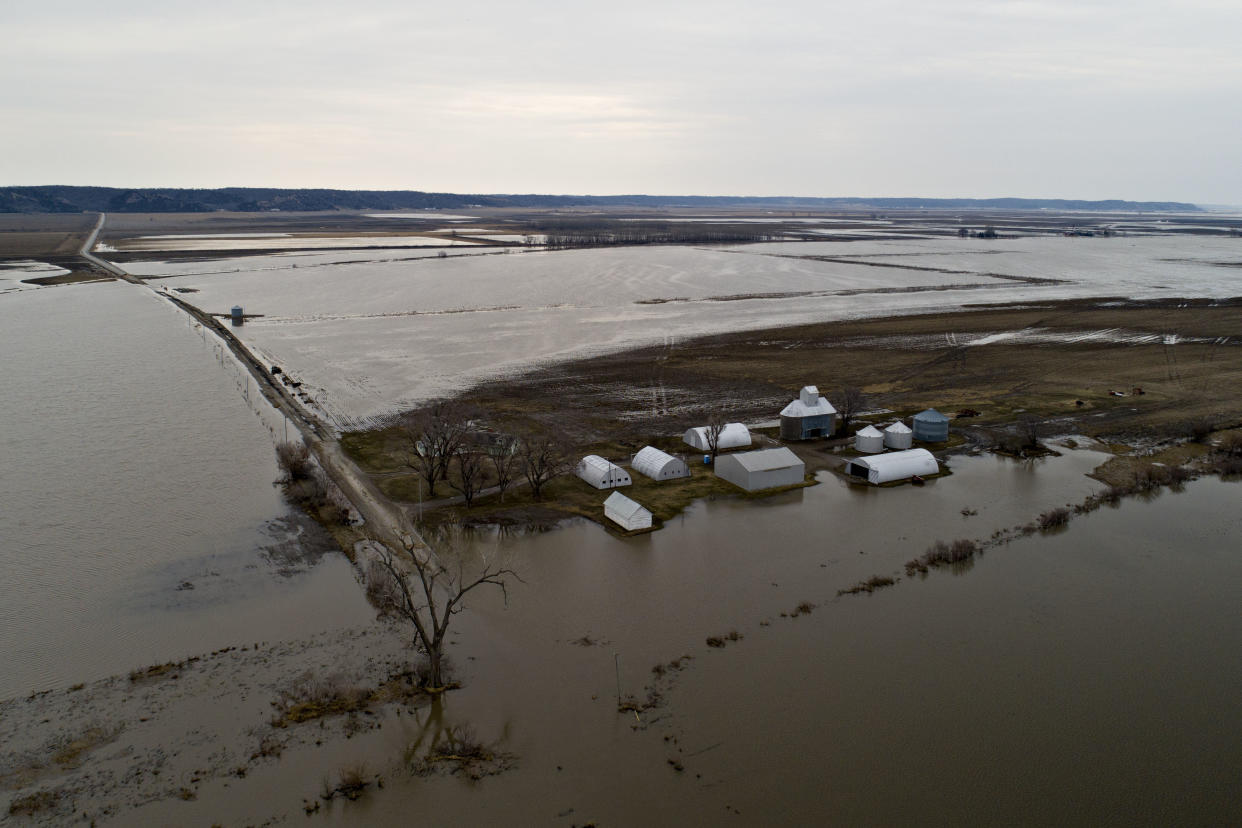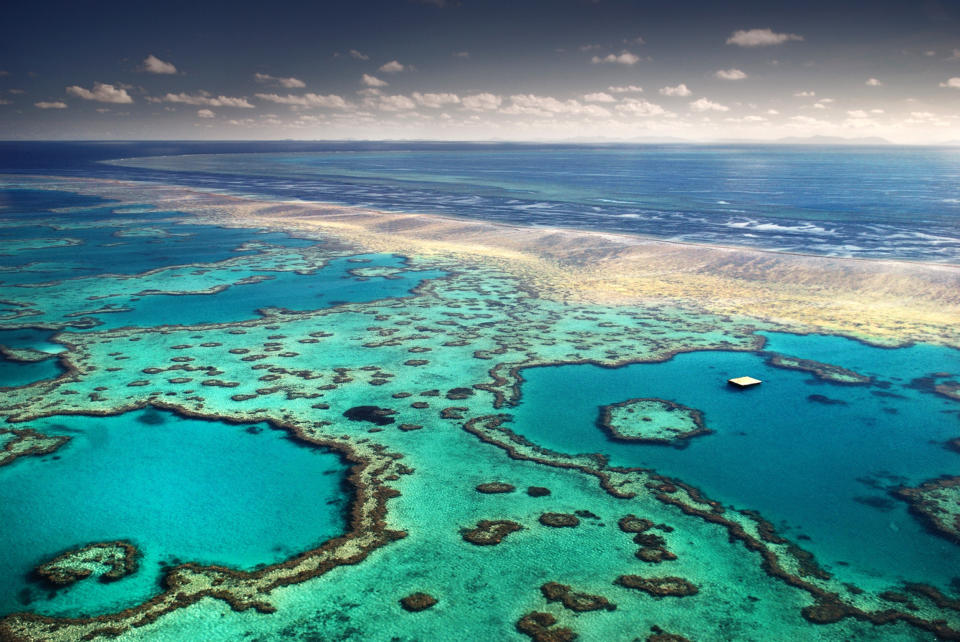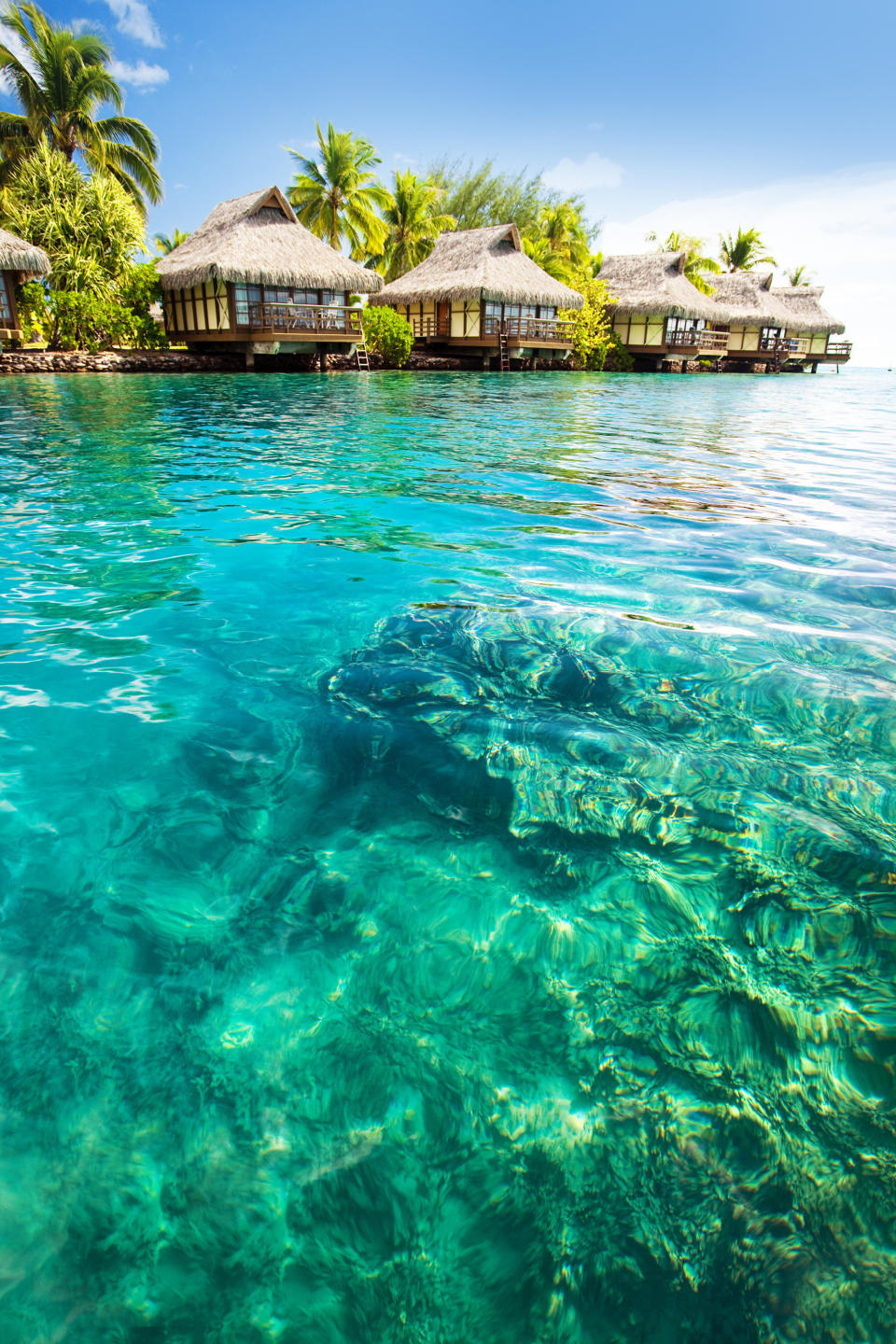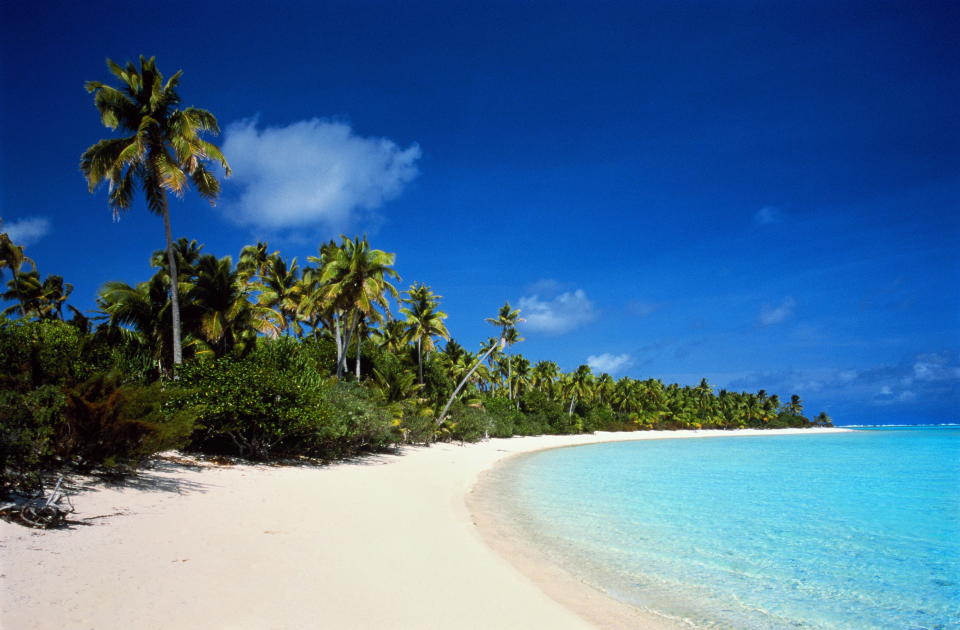Democrats Point To Midwest Flood Victims To Counter GOP’s Green New Deal Attacks

“Look at the flooding in the Midwest,” Sen. Kirsten Gillibrand (D-N.Y.) said Tuesday morning, her voice growing hoarse. “Lives were lost.”
Gillibrand, who last week officially launched her campaign for the Democratic presidential nomination in 2020, was speaking at a press conference ahead of the Senate’s vote on a resolution staking out the core tenets of a Green New Deal.
The vote, widely seen as a bid by Senate Majority Leader Mitch McConnell (R-Ky.) to divide Democrats and slow the Green New Deal’s momentum, comes a week after a “bomb cyclone” ripped through the Midwest, unleashing biblical flooding in parts of Nebraska, Iowa, Wisconsin and Missouri. The floods caused billions of dollars in damages, stripped farmland of fertile soil, killed at least three people and left two more missing. Now the region is bracing for more rainfall and flooding.
“I was just in Iowa. ... People had already died,” Gillibrand said. “Look at the damage and devastation in Puerto Rico and the U.S. Virgin Islands. Whole communities leveled. Homes still not rebuilt.”
On Tuesday afternoon, Washington Gov. Jay Inslee (D), whose own presidential bid is focused exclusively on climate change, called for Senate leaders to “hold hearings to listen to the victims of climate change ― from the ongoing floods in Iowa, Nebraska and Missouri to the wildfires that have burned through California, Colorado and the rest of the West, to the hurricanes that have hit Puerto Rico, Florida, Texas and North Carolina.”

“These people deserve to have their stories heard ― and the Senate, if it truly represents the American people, needs to listen,” Inslee said in a statement to HuffPost. “Today, I am calling on Sen. McConnell and Republican leaders to hold real hearings on climate change, not sham votes.”
Other 2020 presidential contenders did not immediately respond to a request for comment on Tuesday.
Just 11 senators ― 10 Democrats and Bernie Sanders (I-Vt.) ― co-sponsored the Green New Deal resolution in the Senate, along with 89 Democrats in the House. But on Tuesday Democrats in the Senate were united in planning to vote “present” on the measure. McConnell has characterized the vote as an opportunity for senators “to go on record and see how they feel.”
Over the past few months, the emergence of the Green New Deal as left-wing Democrats’ climate clarion call has shifted the long-stagnant debate over greenhouse gas emissions in the United States dramatically leftward. The resolution, which Sen. Ed Markey (D-Mass.) and Rep. Alexandria Ocasio-Cortez (D-N.Y.) released last month, calls for huge changes, including guaranteeing high-wage clean energy jobs to millions of Americans, expanding the social safety net and generating as much of the nation’s electricity from renewable sources as possible over the next decade.
After years of denying the scientific reality of climate change, some centrist Democrats and Republicans are scrambling to draft counter-proposals that they say would require less funding and action from the federal government.
Even while finally admitting that the science is legitimate, Republicans are also pillorying the Green New Deal. GOP officials mocked the proposal with unfounded claims that it called for banning hamburgers and air travel. Rep. Rob Bishop (R-Utah) went so far as to say it risked triggering a “genocide.”
Related Coverage
The Green New Deal Debate Is Coming To A Town Hall Near You
‘Bomb Cyclone’ Triggers Biblical Flooding In Midwest
More Evacuations In Midwest As Missouri River Floods Through Levees
Also on HuffPost
Alaska

Venice

Antarctica

The Great Barrier Reef

The Himalayas

The Maldives

The Alps

The Arctic

Micronesia and Polynesia

Love HuffPost? Become a founding member of HuffPost Plus today.
This article originally appeared on HuffPost.

